Bike buyer’s guide
Whether you’re in the market for your first bike or keen to add a new steed to a growing stable, Margot McGovern and Iain Treloar have tips to help you find the bike that’s right for you.
When looking for a new bike, it’s tempting to fast-track the buying stage and get to the fun part of having a shiny new toy to play with. But a new bike is a big purchase and something you’re ideally going to be spending a lot of time riding, so it pays to take a step back and think carefully about what you buy and where.
Encompassing everything from high-end, featherweight carbon fibre road bikes to sturdy cargo bikes fitted with kid carriers and trailers, the term ‘bike’ means different things to different people. The cost of a new bike can be equally varied, setting you back anywhere from $100 to $10,000 and beyond. Consequently, it’s a good idea to narrow the field before you hit the bike shops by considering the following questions: what sort of riding are you planning to do? Where will you be doing the majority of your riding? And lastly, what’s your budget?
Few people do just one type of riding, and it can be tempting to try and find a bike that will manage a range of different styles of riding. This is no easy task; however, if you look for a bike that caters for all your riding needs, you’ll most likely end up with something that’s okay for most things, but not quite right for anything. Think about the kind of riding you plan to do most, whether it be commuting, fast-paced road riding, leisurely trundles along bike paths or epic tours into the unknown, and find your perfect bike for that kind of riding. Bikes are surprisingly accommodating, and a tyre-change might be all that’s needed to get a speedy commuter ready for the rail-trail that one weekend of the year.
Do your homework
The number of bikes out there can be overwhelming and it’s often tempting to just go with the first thing a sales assistant shows you. However, once you’ve figured out roughly what you’re looking for, do your research. Find out what type of bikes suitable for the kind of riding you want to do are within your price range. Bike brands should provide all the relevant specifications for each model on their websites, and it’s a good idea to read reviews and see what people are saying on bike forums about models you’re interested in. Read reviews critically, considering any biases the authors may have. Talk to friends with bikes and find out why they chose their steeds.
Where to buy
Where you buy your bike is probably more important than you think, and a lower price tag doesn’t necessarily mean a better buy.
Bike shop
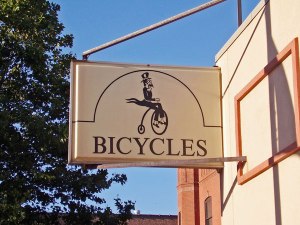 Buying from a bricks and mortar bike shop gives you ongoing access to service and expertise. Because you’re likely to make repeat visits to the shop, it’s a good idea to find somewhere close to home or near where you typically ride, so help is at hand in the event of a problem. That said, it pays to shop around.
Buying from a bricks and mortar bike shop gives you ongoing access to service and expertise. Because you’re likely to make repeat visits to the shop, it’s a good idea to find somewhere close to home or near where you typically ride, so help is at hand in the event of a problem. That said, it pays to shop around.
Picking the right bike shop is more important than many people think, particularly if you’re not into DIY repairs and maintenance. The shop that sold you the bike should have ready access to any replacement parts that may be required down the track. They should also get you fitted on the bike before you roll out of the shop, and will be able to help you make minor adjustments and service the bike as required. The better they know you and your bike, the higher the level of service they will be able to offer.
There’s a war being waged in cycling retail between bricks and mortar stores and nimble, lower-cost international online stores. There’s a lot of pressure on many bike shops as a result, and it’s worth remembering that they generally offer a level of personal service that virtual stores do not. However, they can be more expensive and the quality of assistance you receive from sales staff can vary dramatically. When buying a bike, you should feel like a kid on Christmas morning, and if sales staff don’t make you feel this way, you haven’t yet found the right store.
Shopping for a new bike can be particularly trying for women, as the bicycle industry is heavily male-dominated. Women have different needs and expectations when it comes to bikes, and regardless of gender, a customer deserves to feel that they are respected and treated as equals during the shopping experience. The bike industry is improving in this regard, and if you’re feeling intimidated, receive inferior service, or there is a limited range of female-appropriate gear, then keep looking for a shop that can better match your needs.
Be wary of sales assistants that ask you how much you want to spend before they ask what kind of riding you want to do or what kind of bike you’re after. Whilst it’s important to qualify a customer’s budget, this question can also betray an interest in making a quick sale on the basis of money alone, rather than a real attempt to help find the perfect bike for you.
For those new to riding, the information and jargon can be overwhelming. If you’re not feeling confident, bring a friend who knows their bikes to the bike shop with you to act as translator. Also be clear on what the conditions of the sale are, by considering questions like:
- What is the shop’s returns policy?
- Does the bike come with a warranty?
- Is any servicing included in the cost of the bike? (Often the first service, and increasingly a year’s worth of servicing will be included in the cost of the bike)
Buying online
The big advantage to buying online is that it can work out cheaper, especially when buying from one of the large international companies. However, be aware that you may not be getting quite as good a deal as you think. For a start, you’re skimping on the personal service and advice you get in a bike shop. You also have wait for your purchases to ship and set up the bike and/or install new parts yourself. Plus, if something goes wrong, your local bike shop could be unhappy about fixing a bike bought cheaply online. In the event of any warranty issues on goods purchased overseas, don’t rely on getting support from a local distributor—they are likely to be an entirely separate business to the one that sold the product to the overseas store, and quite rightly shouldn’t be expected to absorb any costs incurred on a product they didn’t even get a sale out of.
Most shoppers use online stores to buy parts and clothing, but it’s also possible to pick up complete bikes. As with accessories and componentry, there’s the risk of getting the wrong thing, but with a complete bike there are more elaborate things to consider than simple measurements and compatibility. A bike has subtle nuances of handling and ride quality that are almost impossible to get a handle on from an online picture and description, and being able to actually test ride and compare bikes is an enormous advantage of shopping in a physical store.
Buying from an online-only store is also risky for new riders. It can be difficult to know what you’re getting if you’re not familiar with the componentry, and you’re relying solely on your own research rather than professional advice. If you’re in the market for a replacement part, make sure any parts you buy are compatible with your bike. This is particularly relevant if your bike is something of a period piece.
As with bricks and mortar stores, it pays to shop around when buying online. Products on one site may seem cheaper than others, but turn out to be more expensive once shipping is added. Many sites have fixed shipping costs or free shipping if you spend over a certain amount. Therefore, it’s smart to wait until there are a few things you need, or combine your order with a friend’s.
For large purchases from international sites, check to see that import duties are included in the price. If not, imports over A$1,000 are subject to duty and/or GST. You will also need to complete an import declaration and provide an invoice or receipt. More information on import regulations is available online.
Also be aware that helmets bought online are not considered compliant unless they bear an Australian standards sticker, even if that particular model is available in Australia.
Buying second hand
Opting for a second hand bike and parts can be a great way to save money and get something a little bit different. Volunteer-run bike workshops, such as the Adelaide Community Bicycle Workshop, are ideal for new riders as you can pick up a cheap bike in need of some love and work with volunteers to nurse it back to a road-worthy state, improving your mechanical skills in the process.
However, there are a few things to be wary of when buying pre-loved goods. First, inspect the bike carefully for wear and damage as the real cost may be considerably higher if you have to replace key parts. Second, if the bike is more than a few years old, consider whether replacement parts are still available and easily sourced. Finally, bike theft is reasonably common and many thieves will resell bikes—often for well below what they are worth—to make a quick buck. If you purchase a stolen bike, knowingly or not, you can be charged with possessing stolen goods, as is stated in the Summary Offences Act 1966 – SECT 26 “If such a person does not in the opinion of the court give a satisfactory account as to how he came by such property he shall be guilty of an offence”. If you purchase a second hand bike, we strongly recommend you do so through a licensed second hand dealer or another trusted source and retain proof of purchase. If you come across a deal that seems too good to be true, it probably is.
Building a bike
If you’re up for a challenge, sourcing parts and building them up into your dream machine is an incredibly rewarding experience and a great way to develop a deep understanding how everything fits together, although it requires a degree of skill and patience.
Before you start happily ordering parts, consider how everything will fit together. This is especially important if you’re working with a mix of old and new components. Make sure you have access to the relevant tools and, ideally, a fellow bike nerd who can lend a hand and offer advice.
Added extras
If you’re saddling up for the first time, you’ll need a few extras on top of a bike before you can get rolling. It’s a legal requirement while riding to wear a helmet that bears an Australian standard compliant sticker and to run a red rear and white front light in low light conditions and at night. Your bike is also legally required to be fitted with reflectors and a bell (most bikes will come with these included). You should also have a good lock. Our testing has found that D-locks offer the best protection (full 2013 locks test results here). Our 2014 lights test results are here.
For a bike rider there are there are three certainties in life: death, taxes and punctures. Keep a small hand pump, tyre levers and spare tubes and patch kit with you when you ride and if you’re not sure how to fix a flat, have a read of our puncture tutorial. If your bike doesn’t have quick release wheels, you’ll also need a 15mm spanner and it’s a good idea to carry set of Allen keys for any minor adjustments you may need to make on the road (this is particularly important if you’re taking the bike out for its maiden spin). We also recommend keeping a floor pump in the garage, as this will make it much quicker and easier to pump your tyres.
What to look for on a test ride
Unless you’re buying online you should be able to take a bike for a test ride prior to purchase. Every bike shop will have its own policy about how far and how long you can ride for and how accurately they’ll fit you to the bike before purchase, but most shops will happily pump the tyres up and let you go for a spin to get a feel for the bike.
As it’s unlikely you’ll get a full fit-up on a bike before you test it, focus on the big things and don’t sweat the small stuff. Gears can be adjusted and handlebar tape, grips, saddle and tyres are all easily (and relatively cheaply) replaced. Make sure that the frame size and geometry are a good fit, and that the overall ‘feel’ of the bike is right—this is more important than whether the gears have been properly adjusted yet.
There is also an emotional side to choosing a new bike. You’re going to be spending a lot of time together, so trust your gut feel over how the bike looks on paper.
Getting a regular service
The first service is the most important and should occur six to eight weeks after purchase. This service is primarily to adjust the gear cables which stretch slightly as they are broken in and can cause additional wear and tear if not readjusted. This service will likely be included with the cost of the bike.
After that, how often you book your bike in for a general service will depend on how often you ride it and how well you maintain it. If you’re looking for maintenance tips, Ride On has a selection of maintenance articles available online.
Generally, you should aim to have your bike serviced once a year and if you notice a problem you can’t fix yourself, book it in at the bike shop right away.
Types of bike
BMX
 BMX racing developed in California in the early 1970s as a gateway to motocross, but quickly became a popular sport in its own right. Today, BMX bikes are broadly defined as either ‘racing’ or ‘freestyle’. They are easily identifiable by their compact frame and small, typically 20 inch wheels. They are single-speed bikes and feature high handlebars and a rigid frame and fork in either steel or aluminium.
BMX racing developed in California in the early 1970s as a gateway to motocross, but quickly became a popular sport in its own right. Today, BMX bikes are broadly defined as either ‘racing’ or ‘freestyle’. They are easily identifiable by their compact frame and small, typically 20 inch wheels. They are single-speed bikes and feature high handlebars and a rigid frame and fork in either steel or aluminium.
Cargo
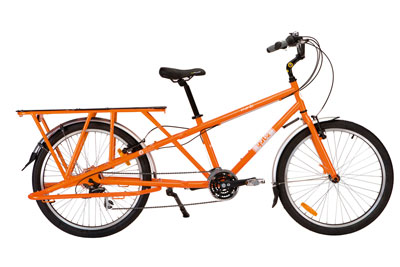 The station wagon of the bike world, cargo bikes are utilitarian beasts designed for transporting heavy loads from A to B. They are available in a huge range of styles, from DIY kits to add to your existing ride, to heavy-duty three-wheeled trikes with room for children and groceries. Their carrying capacity varies from extra-large racks and panniers to sturdy cargo boxes. To help you find a model and style to suit your lifestyle, take a look at our review of fourteen cargo bikes, available online.
The station wagon of the bike world, cargo bikes are utilitarian beasts designed for transporting heavy loads from A to B. They are available in a huge range of styles, from DIY kits to add to your existing ride, to heavy-duty three-wheeled trikes with room for children and groceries. Their carrying capacity varies from extra-large racks and panniers to sturdy cargo boxes. To help you find a model and style to suit your lifestyle, take a look at our review of fourteen cargo bikes, available online.
Children’s
 Kid’s bikes are available in a range of different styles to suit children of different ages and abilities, from balance bikes and tag-alongs to scaled-down versions of adult styles. It can be tempting to opt for a department store bike at a lower price point, but be aware that most of the time, you get what you pay for and you’ll need to build the bike up yourself. If your kids are serious about riding, it’s worth visiting a proper bike shop that can provide ongoing mechanical service and advice. As a first bike, Ride On recommends the ByK E250.
Kid’s bikes are available in a range of different styles to suit children of different ages and abilities, from balance bikes and tag-alongs to scaled-down versions of adult styles. It can be tempting to opt for a department store bike at a lower price point, but be aware that most of the time, you get what you pay for and you’ll need to build the bike up yourself. If your kids are serious about riding, it’s worth visiting a proper bike shop that can provide ongoing mechanical service and advice. As a first bike, Ride On recommends the ByK E250.
Cruisers
 For summer lovin’ beach goers, there’s nothing like taking a cruiser for a leisurely roll along the foreshore. Equipped with wide handlebars, big, comfy saddles, few gears and a laid back geometry these bikes ooze rockabilly cool. More likely to be equipped with cup holders than drink bottle cages, there’s no doubt cruisers are built for taking in the scenery at a slower pace. There are also vintage Dutch-style town bikes available that look smart for short urban rides.
For summer lovin’ beach goers, there’s nothing like taking a cruiser for a leisurely roll along the foreshore. Equipped with wide handlebars, big, comfy saddles, few gears and a laid back geometry these bikes ooze rockabilly cool. More likely to be equipped with cup holders than drink bottle cages, there’s no doubt cruisers are built for taking in the scenery at a slower pace. There are also vintage Dutch-style town bikes available that look smart for short urban rides.
Cyclocross
 Imagine a road bike keen to get its tyres muddy and you have the cyclocross bike. Originally designed for cyclocross racing, it’s equipped with a wide gear range and a light frame, wide clearance to accommodate wide tyres and a slightly more relaxed geometry than a typical road bike. Combining speed with a bit of grunt, they also make great commuters.
Imagine a road bike keen to get its tyres muddy and you have the cyclocross bike. Originally designed for cyclocross racing, it’s equipped with a wide gear range and a light frame, wide clearance to accommodate wide tyres and a slightly more relaxed geometry than a typical road bike. Combining speed with a bit of grunt, they also make great commuters.
Electric
 Once obscure and clunky, e-bike designs are becoming increasingly streamlined and are ideal for those looking for an extra boost to help them through a hilly ride, long commute or to haul that extra bag of groceries home. They come in two types: throttle powered or pedal assist, also called pedelec. In the former, power is generated by twisting the throttle and the rider isn’t required to pedal. In the later, the motor provides extra assistance to the rider while he or she is pedalling and cuts out when they stop. In Australia, some states allow pedelecs with up to 250-watt motors, while other states permit only 200-watt motors. Read Ride On‘s 2013 review of e-bikes, with 33 rated, 44 detailed and five recommended.
Once obscure and clunky, e-bike designs are becoming increasingly streamlined and are ideal for those looking for an extra boost to help them through a hilly ride, long commute or to haul that extra bag of groceries home. They come in two types: throttle powered or pedal assist, also called pedelec. In the former, power is generated by twisting the throttle and the rider isn’t required to pedal. In the later, the motor provides extra assistance to the rider while he or she is pedalling and cuts out when they stop. In Australia, some states allow pedelecs with up to 250-watt motors, while other states permit only 200-watt motors. Read Ride On‘s 2013 review of e-bikes, with 33 rated, 44 detailed and five recommended.
Folding
 Perfect for inner-city dwellers, folding bikes are ideal for quick trips to meetings and the train station. Their compact, folding design and smaller wheels makes them easy to carry on crowded transport and to store in apartments where space is at a premium.
Perfect for inner-city dwellers, folding bikes are ideal for quick trips to meetings and the train station. Their compact, folding design and smaller wheels makes them easy to carry on crowded transport and to store in apartments where space is at a premium.
Hybrid
Ideal for commuting and bike path trundles, hybrids privilege comfort over speed. They have an upright geometry and developed from hardtail mountain bikes, though they generally have bigger, 700c wheels for on-road efficiency.
Mountain
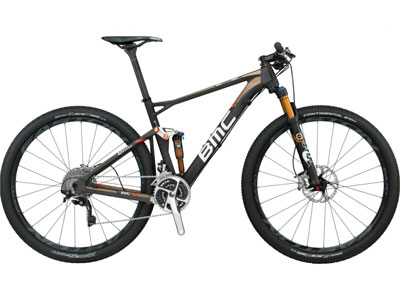 Mountain bikes are designed for off-road riding and feature knobby tyres and wide, flat bars for handling rough terrain. They come in three different wheel sizes: 26 inch, 29 inch and the new 27.5/650B, and three key styles. Rigid bikes are rare as they have no suspension and aren’t particularly comfortable on bumpy tracks. Hardtail bikes feature a suspension fork and a rigid rear. Dual or full suspension bikes have front and rear suspension and come in a range of styles with varying geometry and travel (measure of suspension). For example, cross country bikes have short travel as they are designed for less extreme terrain and downhill bikes have slack angles to prevent riders pitching over the front wheel on particularly steep tracks.
Mountain bikes are designed for off-road riding and feature knobby tyres and wide, flat bars for handling rough terrain. They come in three different wheel sizes: 26 inch, 29 inch and the new 27.5/650B, and three key styles. Rigid bikes are rare as they have no suspension and aren’t particularly comfortable on bumpy tracks. Hardtail bikes feature a suspension fork and a rigid rear. Dual or full suspension bikes have front and rear suspension and come in a range of styles with varying geometry and travel (measure of suspension). For example, cross country bikes have short travel as they are designed for less extreme terrain and downhill bikes have slack angles to prevent riders pitching over the front wheel on particularly steep tracks.
Recumbent
 Extremely laid-back and low to the ground, recumbent bikes have reduced wind resistance, a wide range of gears and increased stability and back support, making them ideal for long distance touring. They’ll also give your core muscles a real work out. Because they are so low to the ground, many riders attach a raised flag to their bike for added visibility.
Extremely laid-back and low to the ground, recumbent bikes have reduced wind resistance, a wide range of gears and increased stability and back support, making them ideal for long distance touring. They’ll also give your core muscles a real work out. Because they are so low to the ground, many riders attach a raised flag to their bike for added visibility.
Road
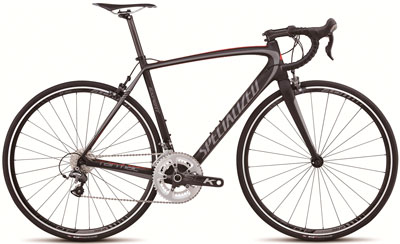 As the name suggests, these bikes are designed for on-road, athletic rides and feature 700c wheels and lightweight frames, usually made from either aluminium or carbon fibre. Road bikes can be broadly divided into two styles. Endurance road bikes have a more relaxed and upright geometry and, as the name suggests, are ideal for longer rides. They are also a good option for those new to riding. Road race bikes are designed for speed, with aggressive geometry and responsive handling. Road bikes can feature amazing technology, with electric shifting and hydraulic brakes both exciting recent developments.
As the name suggests, these bikes are designed for on-road, athletic rides and feature 700c wheels and lightweight frames, usually made from either aluminium or carbon fibre. Road bikes can be broadly divided into two styles. Endurance road bikes have a more relaxed and upright geometry and, as the name suggests, are ideal for longer rides. They are also a good option for those new to riding. Road race bikes are designed for speed, with aggressive geometry and responsive handling. Road bikes can feature amazing technology, with electric shifting and hydraulic brakes both exciting recent developments.
Singlespeed/fixed gear/track
 Once upon a time, fixed gear bikes were the norm, and still are in track racing. They have also seen a revival with the hipster crowd in recent years. On a fixed gear bike the rear sprocket threads directly onto the wheel’s hub, so that the rear wheel moves in sync with the pedals. When the rider stops pedaling, the wheel stops turning, allowing he rider to control speed and brake with his or her feet. ‘Fixies’ are almost always singlespeeds as there can be no slack in the chain. For adequate control, riders should use either toe clips, straps or ‘clipless’ pedals when riding fixed. Singlespeeds, like geared bikes, have a freewheel that continues to turn when the pedals are stationary and must be controlled by brakes. Both fixies and singlespeeds are easy to maintain and ideal for flat urban riding. For more information, see Iain Treloar’s article ‘Single minded’.
Once upon a time, fixed gear bikes were the norm, and still are in track racing. They have also seen a revival with the hipster crowd in recent years. On a fixed gear bike the rear sprocket threads directly onto the wheel’s hub, so that the rear wheel moves in sync with the pedals. When the rider stops pedaling, the wheel stops turning, allowing he rider to control speed and brake with his or her feet. ‘Fixies’ are almost always singlespeeds as there can be no slack in the chain. For adequate control, riders should use either toe clips, straps or ‘clipless’ pedals when riding fixed. Singlespeeds, like geared bikes, have a freewheel that continues to turn when the pedals are stationary and must be controlled by brakes. Both fixies and singlespeeds are easy to maintain and ideal for flat urban riding. For more information, see Iain Treloar’s article ‘Single minded’.
Step-through
 Originally designed to allow women to ride in long dresses, step-throughs are no longer considered women’s specific. Their sloping top tube saves the indignity of swinging a leg over the saddle when mounting. They generally have very upright geometry and swept back handle bars and are ideal for shorter, flatter trips. They may not break any speed records, but they are hard to beat for classic style.
Originally designed to allow women to ride in long dresses, step-throughs are no longer considered women’s specific. Their sloping top tube saves the indignity of swinging a leg over the saddle when mounting. They generally have very upright geometry and swept back handle bars and are ideal for shorter, flatter trips. They may not break any speed records, but they are hard to beat for classic style.
Tandem
 Tandem bikes accommodate two or (occasionally) more riders seated one behind the other. Although some allow riders to pedal independently, usually both sets of cranks are joined by a timing chain that keeps them in sync. They are available in various styles, including recumbent, and are particularly popular with vision impaired riders who pair up with a non-vision impaired ‘captain’.
Tandem bikes accommodate two or (occasionally) more riders seated one behind the other. Although some allow riders to pedal independently, usually both sets of cranks are joined by a timing chain that keeps them in sync. They are available in various styles, including recumbent, and are particularly popular with vision impaired riders who pair up with a non-vision impaired ‘captain’.
Triathlon
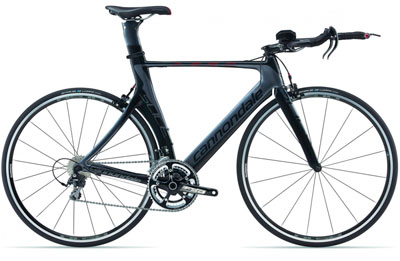 A close relative of the road racing bike, the triathlon bike is designed for maximum aerodynamic efficiency as, unlike in road racing, triathletes don’t draft off other riders. Tri bikes are fitted with horizontal aero bars, steeper tube angles and a lower stem and handlebar position, creating a more aggressive geometry and a lower drag profile.
A close relative of the road racing bike, the triathlon bike is designed for maximum aerodynamic efficiency as, unlike in road racing, triathletes don’t draft off other riders. Tri bikes are fitted with horizontal aero bars, steeper tube angles and a lower stem and handlebar position, creating a more aggressive geometry and a lower drag profile.
Tourer
 Designed to go the distance, touring bikes are sturdy, practical machines. They are more upright than road bikes, placing more weight over the rear wheel. Kitted out to carry your worldly possessions off the beaten track, they generally include mudguards, slightly wider tyres than a road bike and handlebars that offer multiple hand positions, such as ‘butterfly’ bars.
Designed to go the distance, touring bikes are sturdy, practical machines. They are more upright than road bikes, placing more weight over the rear wheel. Kitted out to carry your worldly possessions off the beaten track, they generally include mudguards, slightly wider tyres than a road bike and handlebars that offer multiple hand positions, such as ‘butterfly’ bars.
Women’s specific
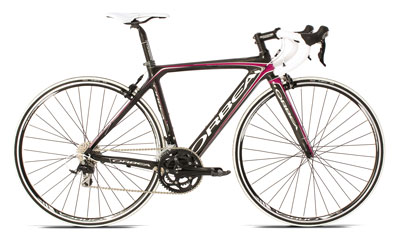 There’s been a lot of debate about whether women’s specific bikes are just clever marketing or a genuine investment. we’re inclined to lean towards the latter. Men tend to have a long torso and shorter legs, while women have a short torso and longer legs. To cater for this, the main difference in a women’s specific bike is a shorter top tube. They also often feature narrower handlebars and a raised stem as women tend to opt for a higher saddle position.
There’s been a lot of debate about whether women’s specific bikes are just clever marketing or a genuine investment. we’re inclined to lean towards the latter. Men tend to have a long torso and shorter legs, while women have a short torso and longer legs. To cater for this, the main difference in a women’s specific bike is a shorter top tube. They also often feature narrower handlebars and a raised stem as women tend to opt for a higher saddle position.
Ride On content is editorially independent, but is supported financially by members of Bicycle Network. If you enjoy our articles and want to support the future publication of high-quality content, please consider helping out by becoming a member.


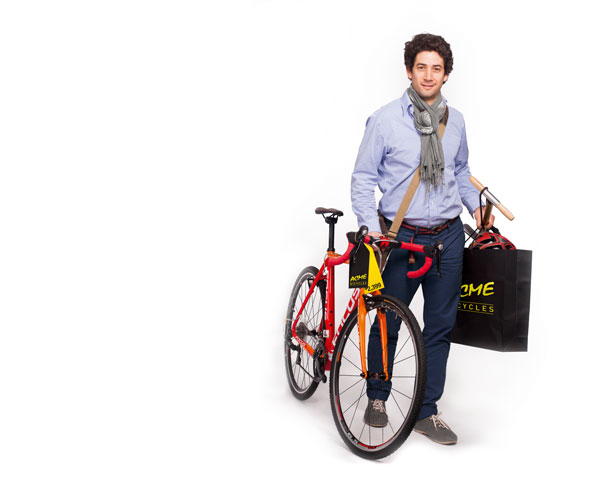


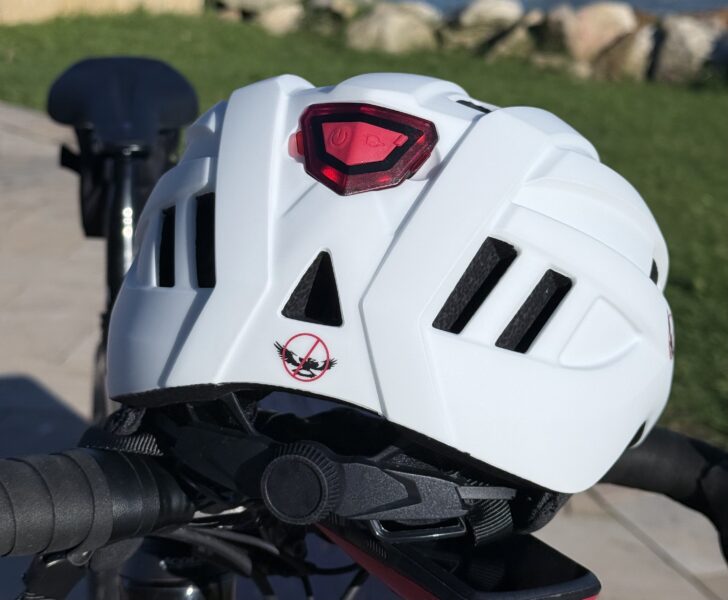

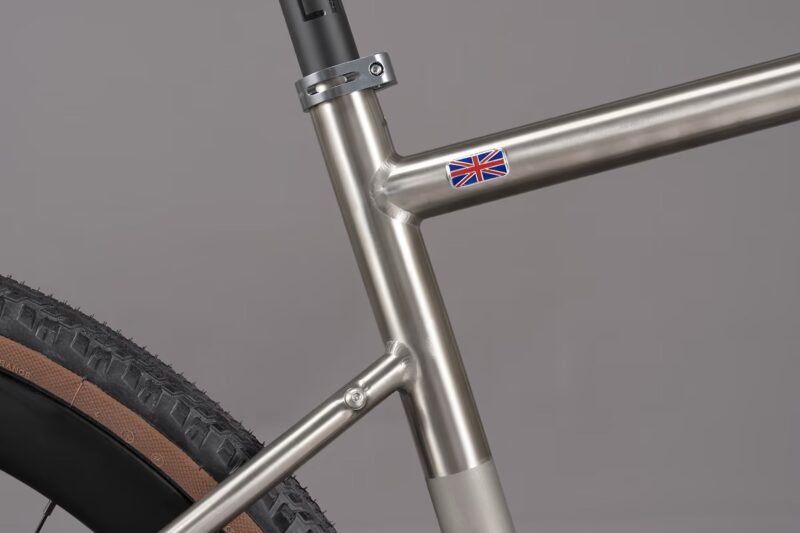



I found your review articles confusing and unnecessarily ‘yankee’ in that they mixed centimetres with inches, noting along the way that inches are not legal tender. Please have consideration and help us, not yourselves. Otherwise a helpful article.
The reason both units are used in the article is because that’s the way it is in real life. Mountain bike wheels and frames have historically been expressed in inches, whereas road bikes use the european convention. I thought it was an informative article and covered just about everything the beginner needs to know.
Commuters who plan to ride all year should look for the almost-no-maintenance combination of a belt drive with an internally-geared hub. One muddy wet ride will have any chain and derailleur system grinding grit until you clean it properly, and a belt doesn’t have any grease to get on you or your clothes.
Having just bought a new bike
– I couldnt find reviews online anywhere for the three models I was considering. Giant Cross City RX, and the equivalent from Merida and Cannondale. Or I found one review and it was 4 years old.
– You didnt mention bricks and mortar store could measure and fit you to ensure you got the correct frame size. Was very impressed with this service from the store I bought from.
Also the bricks and mortar store actually advised me not I didnt really need to spend $1,500 on the top of the line flat bar road bike I was considering; and that the next model down at a more affordable $1,000 (and discounted to $800) was suitable.
I road tested the bike I was looking at and an alternative from a different company and bought the alternative.
The women specific frame on road bike can be totally disregarded: simply use a smaller frame, whereas handle bar length is just an accessory which can be changed like the pedals. I am not sure which is the source about men vs women length of legs and torso, generally body are quite proportionate no matter the gender.
Womens specific road bikes have their place. Not all women are the same but many women have different proportians to men the important thing man or woman is to be measured and purchase a bike that is the right dimensions. A women with long legs and short torso on a smaller frame could find herself with a big drop to the handle bars from the seat and womens road bikes often acommidate this. But i will agree not every women needs a womens bike every rider needs a bike properly fitted though
I was keen to read the cargo bike review but unfortunately the link seems to be broken. Could you please fix it.
Thanks!
Hi Rob. Sorry the links were broken. Thanks for letting us know. They’re all updated now. I hope the info is helpful to you. Happy riding.
Iain Treloar’s article ‘Single minded’ as referenced in the ‘Singlespeed/fixed gear/track’ bike type section has moved here:
https://rideonmagazine.com.au/single-minded/